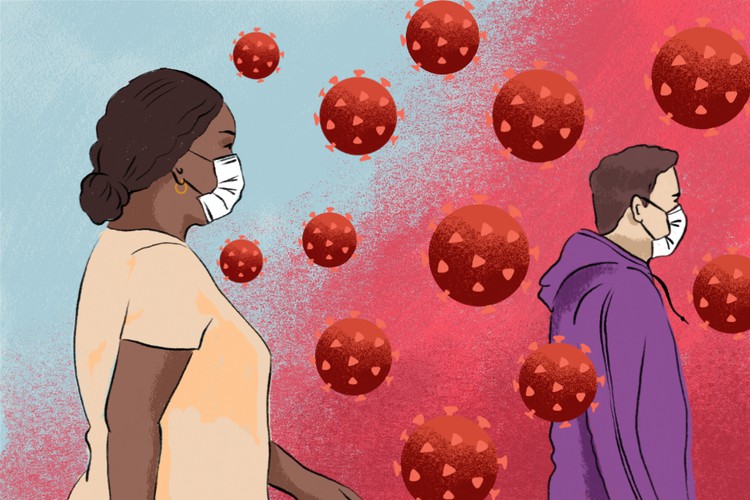What the latest blood donor survey shows about Covid
About 70% of people had already been infected before omicron hit
The survey once again shows the serious race disparities in South Africa. Illustration: Lisa Nelson
The South African National Blood Service (which handles the blood supply for eight provinces) and the Western Cape Blood Service have been testing some donors for Covid antibodies over the last year or so. This has contributed to our understanding of how many people have been infected by SARS-CoV-2 (the virus that causes Covid), and what proportion of infections lead to death. It may help us plan for future waves, though exactly how is complicated.
On the assumption that another wave towards the end of 2021 was nearly inevitable – but before we all heard about omicron – it was decided to perform more such testing in early November. The numbers are now out.
The headline results are:
- Overall about 80% of black donors had previously had Covid, and 40% of white donors.
- There is no meaningful variation between age groups and sexes.
- This latest survey did not include Western Cape data.
The test used does not detect the antibodies produced in response to vaccination, so this really is an estimate of people who have been infected.
While blood donors are not perfectly representative of the country’s population, we can take into account differences between the racial breakdown of the donor population and the racial breakdown of the general population. This means that our face-value national estimate is that about 70% of people had been infected before the omicron wave hit.
Since then we’ve had the omicron wave. We would very much like to know how many people are infected now, but there’s really no simple way to derive this number. Researchers are now updating their models with this additional piece of data, and we may see some estimates soon.
With that caution, here is my back-of-the-envelope estimate:
- Omicron seems to have little trouble infecting people who have been infected by other variants, though there is some protection from prior infection and vaccination.
- By late last year, quite a bit more than half the population had already had a prior infection.
- Hence, I estimate that about half of the omicron wave infections were in previously uninfected individuals.
- Given the infection detection rate estimates from previous waves, and a number of plausible sources of possible variation in this rate, I estimate the detection rate at about 1 in 10.
- Given the roughly 700,000 cases reported between mid November and mid February, we get an estimate of 7 million cases, and therefore 3.5 million new infections.
- Given our population of about 60 million, this is roughly an additional 6%.
Bottom line: it’s not crazy to estimate that about three-quarters of South Africans have by now been infected. But I would not be surprised if serious models come up with even higher estimates.
A troubling result of the survey is that once more it shows the serious racial disparities in South Africa. I don’t know if this carried over to the omicron wave. Estimating the racial breakdown of infection after omicron depends in a complicated way on variations in housing, lifestyle, access to vaccination, and all the usual factors that shape daily life in our country.
Next: Makana municipality faces more court action over filth
Previous: Has the national government abandoned vaccination?
© 2022 GroundUp. This article is licensed under a Creative Commons Attribution-NoDerivatives 4.0 International License.
You may republish this article, so long as you credit the authors and GroundUp, and do not change the text. Please include a link back to the original article.
We put an invisible pixel in the article so that we can count traffic to republishers. All analytics tools are solely on our servers. We do not give our logs to any third party. Logs are deleted after two weeks. We do not use any IP address identifying information except to count regional traffic. We are solely interested in counting hits, not tracking users. If you republish, please do not delete the invisible pixel.



